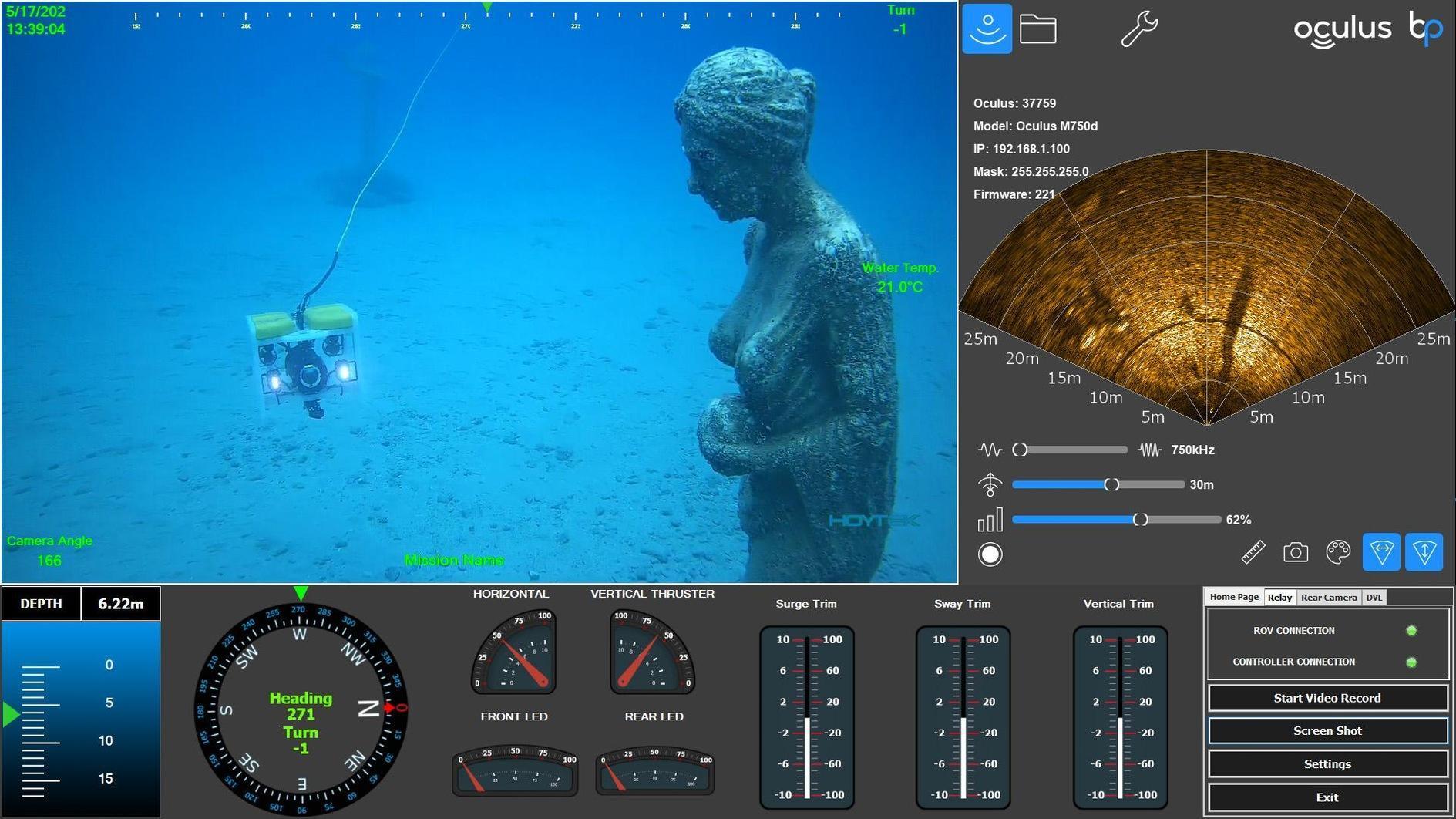
Underwater robots, nearly 80 percent of which are produced in Türkiye, are used for marine archaeology, by the coast guard and in natural gas and oil exploration works.
While the giant robots are used in oil and natural gas exploration works on Fatih, Kanuni and Abdülhamid Han ships, especially in the Mediterranean, smaller robots are used in underwater archaeology imaging and excavation studies, as well as underwater studies of the Coast Guard Command and maritime police.
A model application study has been recently carried out with two robots, named Demre and Finike, which are used in the marine archeology research studies of Akdeniz University. The undersea depths were examined with robots lowered into the Mediterranean in the Üç Adalar region off Kemer.
Bertan Tezcan, general manager of the company that produces the robots, stated that 70-80 percent of these devices are of domestic production.
“These are unmanned submarine vehicles of different sizes. We make different types of robots, from small sizes to 100 meters, weighing from 15-20 kilograms to 3-4 tons, and capable of diving to a depth of 2,000 meters. Their areas of use are archaeological and geological research, universities, search and minor rescue activities. We also make large robots that work at a depth of 2,000-3,000 meters. We made small robots for the Coast Guard and maritime police. The big ones are used by Turkish Petroleum. Currently, there are big robots on the Fatih, Kanuni and Abdulhamid Han ships. They work 24 hours a day, seven days a week at 2,200 meters. Their main duty is to be responsible for the security and maintenance of everything within 2,200 meters. There are pilots above the water, they remove them from water every eight to nine days, maintain them and throw them back into the water. These types of devices do everything that divers cannot do below 20 meters. We are one of maybe five or six companies in the world that produces all kinds of sizes of these robots,” he said.
Tezcan mentioned that there are many devices on the research ship of Akdeniz University, where the two robots Demre and Finike work, which can go down to a depth of 300-500 meters.
“Each robot has a camera and an angle sensor. There is another sensor on the bottom that shows how far under the sea it is. There is another camera on the back and there is light. It also has six electric motors. Thanks to these electric motors, you can make movements such as sideways, right, left, up and down. The motors allow you to observe whatever you are observing. The robots have many features and weigh only 45-50 kilograms. This is what we give to the coast guard and police. Our models start from 100 meters and vary from 300, 600, 1,000 and 3,000. We also export them to Chile, England and Norway.”
[HH] They can take images from 500 meters and do excavation
Stating that they used sonar devices on the marine archaeology research ship, Akdeniz University Head of Cultural Heritage Preservation and Restoration Department, Associate Professor Hakan Öniz said that they were able to scan the sea up to a depth of 500 meters and take images with these sonar devices.
He said that they have not started comprehensive research yet, but that it is not possible for people to dive into the sonar images, which are thought to belong to a wreck, as they lie at depths of 400-500 meters.
“We need underwater robots to understand whether these ruins are really wrecks or not, and if they are, to excavate them. We are happy that Türkiye is among the few leading countries in the world in terms of underwater robots. Turkish companies manufacture underwater robots that go down to a depth of 3,000 meters. We have been using underwater robots for about 10 years, but these were robots that went down to a depth of 80-100 meters. They didn’t have the technology to do any excavation. However, for the last two years, we have had underwater robots on our research ships. They are capable of removing artifacts from the sea. Of course, our goal is to carry out underwater excavations using robots in deeper waters. Currently, two countries in the world are carrying out scientific diving projects using underwater robots,” Öniz said.
Öniz pointed out that scientists around the world follow international treasure hunting companies in using underwater robots.
“Today, unfortunately, a few companies carry out illegal excavations at depths of 1,000-2,000 meters in international waters, sometimes making agreements with other countries. We haven't documented it in detail yet but we are aiming for this. We want to conduct research in very deep waters and, when necessary, excavate with underwater robots. Our preparations continue for this,” he added.
Emphasizing that Türkiye has approximately 8,500 kilometers of coastline, Öniz said that they carried out archaeological underwater research on the Mediterranean coast with the permission of the Culture and Tourism Ministry, and that they documented 367 archaeological shipwrecks to date.
Stating that among these is the Kumluca Middle Bronze Age shipwreck, considered as the oldest shipwreck in the world, Öniz said, "It is approximately 3,500-3,600 years old. Apart from this shipwreck, there are many other documented shipwrecks. I hope we will have the opportunity to unearth and exhibit these shipwrecks at the Mediterranean Underwater Archaeology Museum planned to be built in Kemer.”